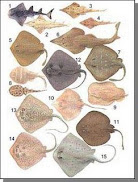52 Best Fishing Knots = Most fishing knots and best value in the store. Plus 2 emergency hook removal techniques!
Animations are a great way to learn to tie knots. The Animated Fishing Knots App makes learning to tie knots easy and fun! Each of 52 fishing knots has its own animation video, a picture of the finished knot and a description of the knot’s use.
The following 52 best fishing knots are included (the most fishing knots of any App in the store):
Knots for tying on tackle:
•Baja Knot
•Berkley Braid Knot
•Centauri Knot
•Davy Knot
•Drop Shot Rig
•Egg Loop
•Eye Crosser Knot (Knot Wars winner)
•Fish N Fool Knot (Knot Wars winner)
•Harvey Dry Fly
•Improved Clinch Knot
•Jansik Special
•Knotless Knot
•NanoFil Knot
•Offshore Swivel Knot
•Orvis Knot
•Palomar Knot
•Pitzen Knot
•San Diego Jam Knot
•Snell Knot Uni version
•Snell Knot Traditional version
•Trilene Knot
•Turl Knot
•Uni Knot
•World’s Fair Knot
Knots for tying two lines together:
•Albright Special
•Blood Knot
•Double Uni Knot
•J Knot
•Nail Knot
•Seaguar Knot (Fluorocarbon to mono)
•Slim Beauty (Awesome leader knot)
•Surgeon’s Knot
•Willis Knot
•Yucatan Knot
Knots for tying loops in line:
•Bimini Twist
•Dropper Loop
•Homer Rhode Loop Knot
•King Sling
•Non Slip Loop Knot
•Perfection Loop
•Rapala Knot
•Spider Hitch
•Surgeon’s End Loop
Miscellaneous
•Arbor Knot (Tie line to reel)
•Bobber Stopper Knot
•Hook Removal (two techniques, animated)
•Knot Tyer Nail Knot
•Two Strike Indicator Knots
•Two Tenkara Knots
Features:
- 52 carefully selected best fishing knots - Knots are listed and searchable alphabetically by name or by category and use. - Pause, and play the video with controls - Info page shows completed knot and gives information about the knot and its use.
go to;-Animated Fishing Knots


.jpeg)























